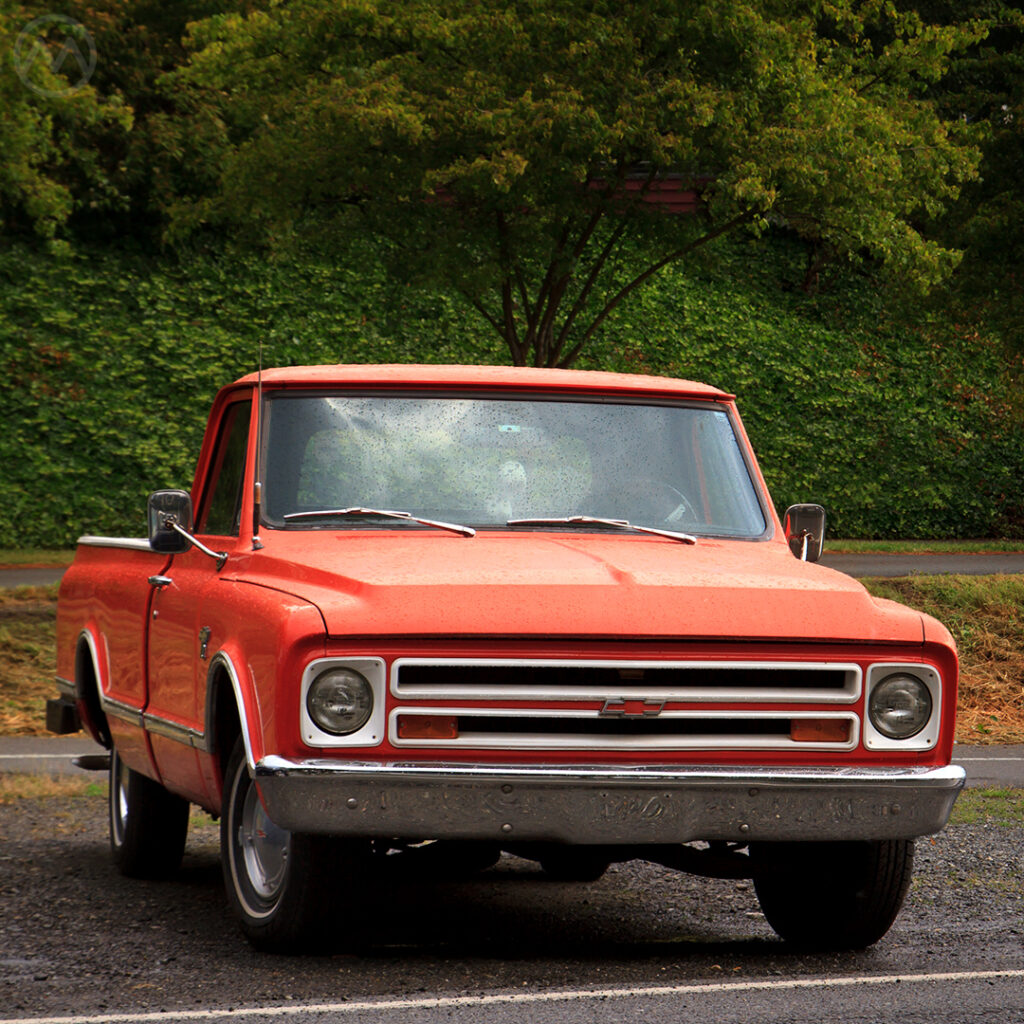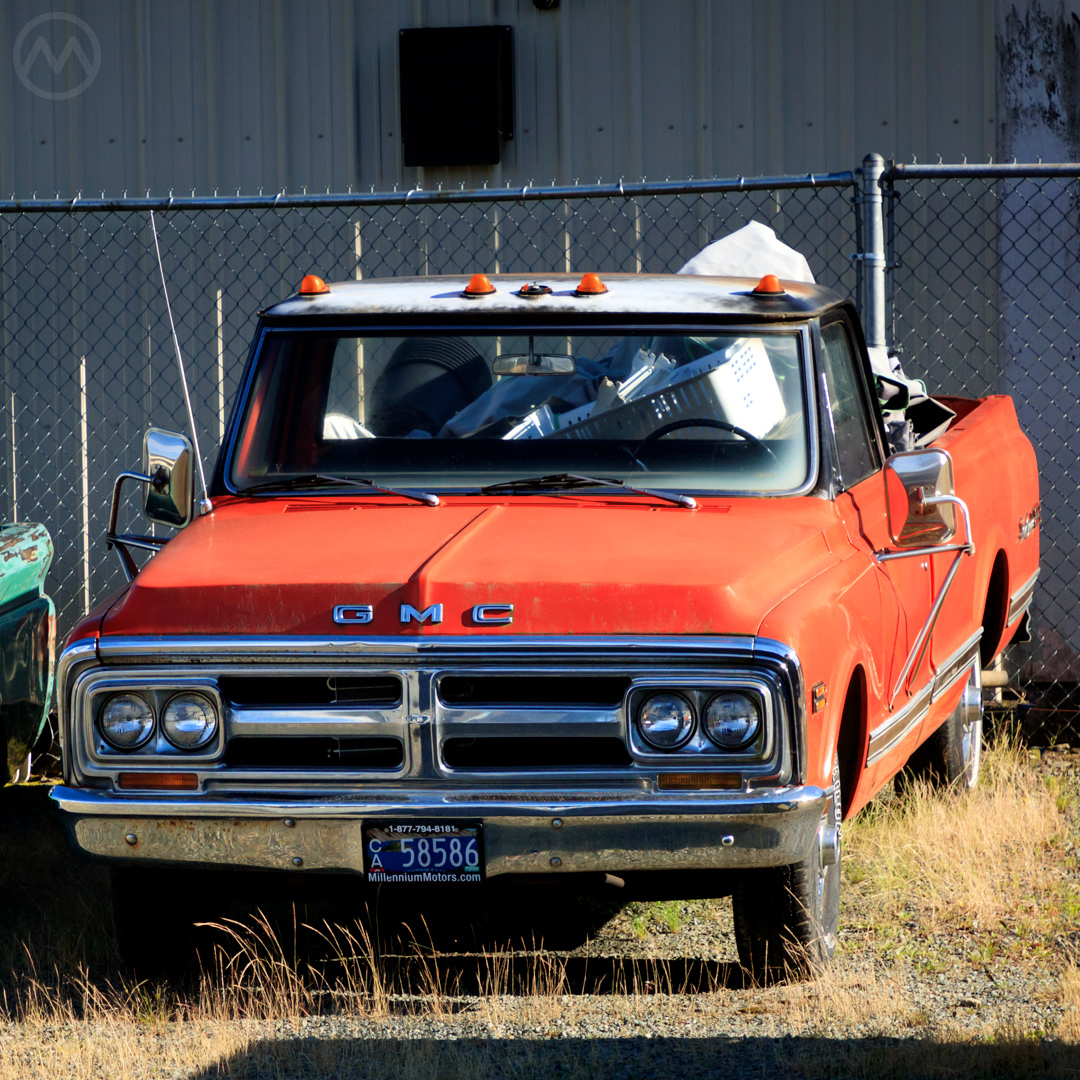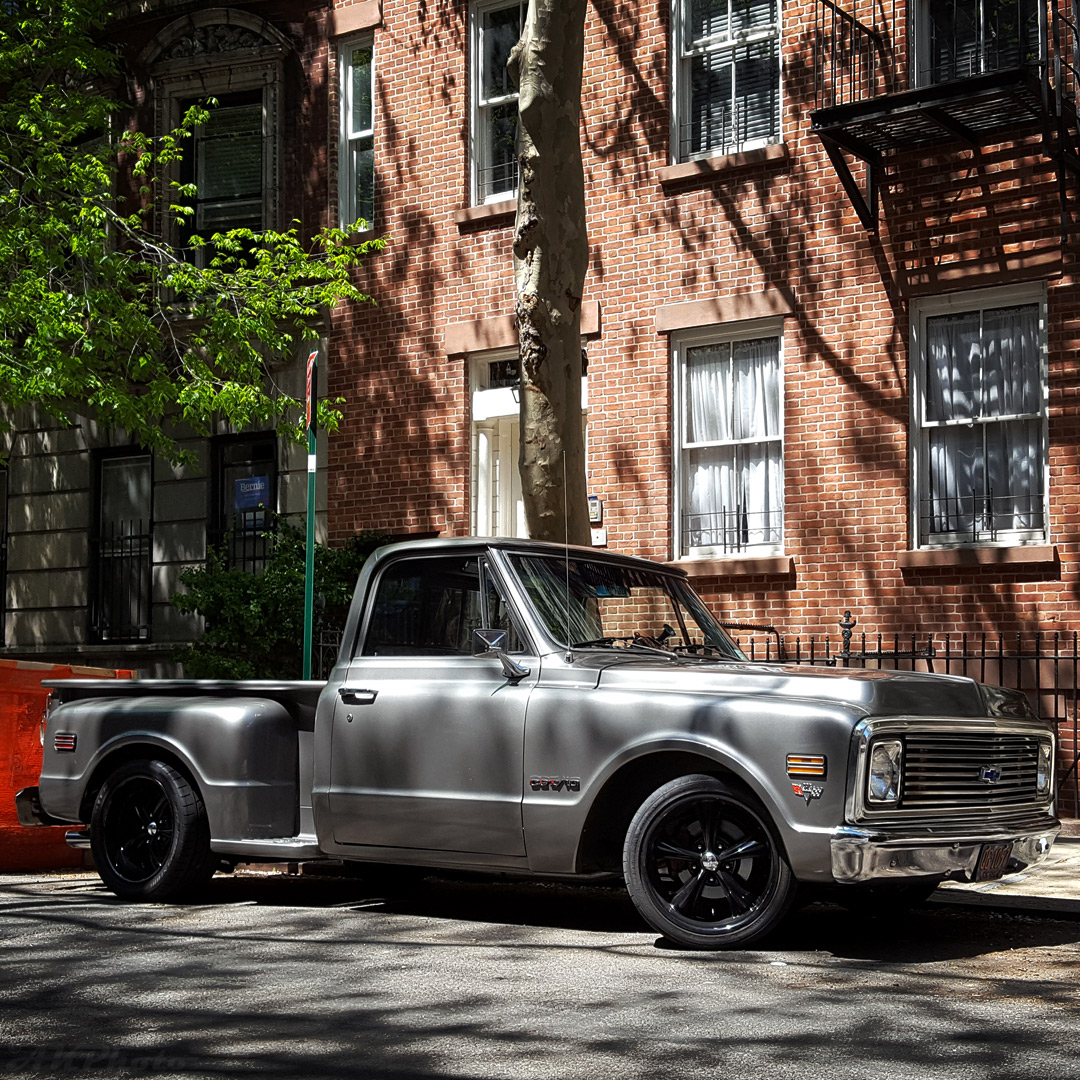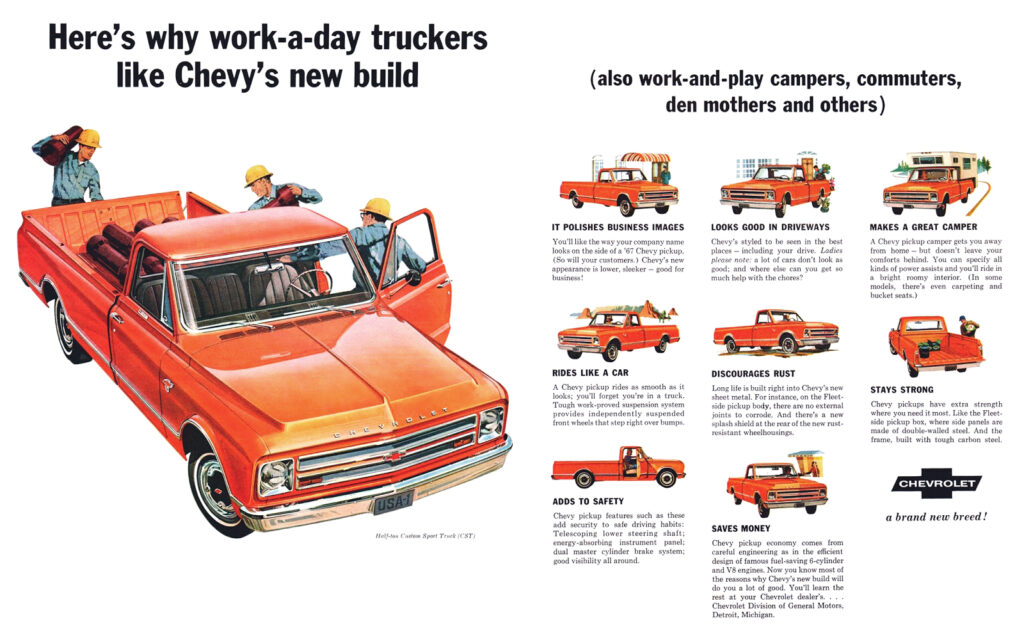“We think it’s about time trucks stopped looking so trucky,” read one of Chevy’s ads for its all-new 1967 pickups. In sharp contrast to most of today’s pickups, 1950s and 1960s trucks went out of their way to appear more consumer-friendly with each redesign. The 1967-72 Chevy/GMC “Action Line” trucks were among the cleanest looking around. International’s 1969-75 “Light Line” was similarly spare but sold in much smaller numbers.
1967 was long before pickups were considered alternative family transport, but in hindsight, the Action Lines are just one more step on the continuum of big pickups, gradually morphing from pure work vehicles to a hybrid of family car and truck in the present day. This phenomenon isn’t exclusive to the Americas, but North America is the only place where gigantic pickups are truly everyday transit for a large number of people.
These old C (rear-wheel drive) and K (four-wheel drive) trucks would seem very small to modern buyers, and they were never offered as anything but a regular cab (a rare configuration today), so there’s more than one serious contrast to modern trucks. Whether Chevy was successful in wooing car people is open to debate, but in 1969 the Bowtie toughened up the look a little as it didn’t feel the ‘67 and ‘68 trucks had lived up to their sales potential against Ford.
Today these trucks, particularly the 1969-72 examples like this one, are among the most popular classic Chevy trucks and the most sought-after by restomodders. It’s possible that’s because of, ironically, the “make it more car-like” design ethos that the ‘69 refresh was meant to slightly counteract.

Designing the Action Line
Among the team who designed the ‘67s was Harry Bentley Bradley, better known as the designer of the original set of Hot Wheels diecast cars. Bradley was only at GM from the summer of 1962 to mid-1966, but worked exclusively in the truck studio and was there for almost the entire development process under chief Don Lasky, who would soon move over to Buick.
Design studies for the ‘67s began as early as 1963, and the popularity of the fleetside “Cameo” informed the choice to make the Action Line a little more car-like in style and feel. Most of the design work focused around fleetside beds and, according to Bradley, the aging circa-1955 stepside bed fenders from the previous trucks were slated to be reused. Indeed, for a brief period in 1963, GM management hemmed and hawed about designing an entirely new truck at all, and the truck studio briefly worked on re-skinning the circa-1960 design.
But by early 1964 things were back on track. Many of the design concepts looked like later Pontiacs for Ford sedans, with stacked headlights briefly considered and smooth treatments the order of the day. All of these designs were smooth and futuristic, and looked to make the bed as visually integrated as possible. Bradley related in a 2003 interview that he himself rendered some stepside versions just so there’d be some incentive not to ignore that part of the market.
Under the skin the new trucks would follow where the first-gen C/K of 1960 had led. That truck debuted in 1959 with a drop-center frame and independent front suspension, greatly softening the driving experience and no longer requiring a steep step up into the cab (as is often required today).

The Car-Like Truck
The smoothed out ‘67s were an all new design, and suddenly the rear suspension got some attention too. Although leaf springs were still optional (and standard on one-tons and 4WDs), ½-ton and ¾-ton rear-drive C/Ks got coil springs and trailing arms attached to their live axle for an even softer ride.
The lower-end models still looked quite truck-like inside, but you could get a fully carpeted interior and a “buddy bucket seat” option with two proper buckets and a central folding jump seat (though not all of them pivoted).
The cavernous engine bay was designed to hold big blocks, although many were built with small blocks and even 250-cube sixes. There’s almost no limit to what can fit in there, which is one reason for its modern popularity as a restomod truck.
The 396 was added in 1968, and in time the 402 was added as well. The trucks came on two wheelbases, 115″ (292cm) and 127″ (323cm), with the short-bed trucks being the obvious choice for people who want to build for speed nowadays (they weigh about 300-400 lbs. less on average than long-beds). The models were simple on the consumer oriented trucks, C/10, Custom/10, and CST-10 for the top spec. CST.
“CST” stood for “Custom Sport Truck,” and it was probably the most adventurous part of this design. As Bradley related, “Back then nobody bought a pickup truck for pleasure or sport,” adding that he was the only member of the truck studio staff who actually drove a pickup every day. The CST was created to woo new buyers and define a new market, just like Dodge’s “Dude,” but more subtle and on a wider scale.

Muscling Up the Action Line
Chevrolet was disappointed with the results of 1967 and 1968, but by then much of the staff that had designed the trucks had turned over. Paul Hitch, chief truck engineer, came onto the project in the late stages, while veteran designer Bill Lange (much more well known for 1950s Motorama cars) was leading the teams working on the visuals. They also helped design the first Blazer, a modified version of the C/K with a removable top.
This Blazer was actually the second one designed, as Bradley had previously worked on a lighter-duty Blazer concept that shared more similarities with the Jeep Commando. That truck nearly made it to production but was dropped at the last minute, a decision that influenced Bradley to leave for Mattel and Hot Wheels.
The C/K styling was updated in 1969 with an egg-crate grille and more optional side chrome, which allowed for this well-known two-tone scheme (typically a sign of a highly-optioned example). According to Bradley, many designers weren’t such big fans of the update, and he preferred the cleaner original. Buyers, however, liked the updated one better, and so do classic truck fans.
Because Ford’s contemporary 5th and 6th-gen F-series look so much alike, it can sometimes seem like the Fords vastly outnumber the Action Lines, but in fact Chevy and GMC were almost evenly matched with Ford at the time and all of these trucks are common across all of North America even today.
The two-tone Custom and CST 10s found collectors early and are the darlings of restomodders for their rock tough components and lego-like swapability – there are many different drivetrain combinations that can make the trucks truly fast.


